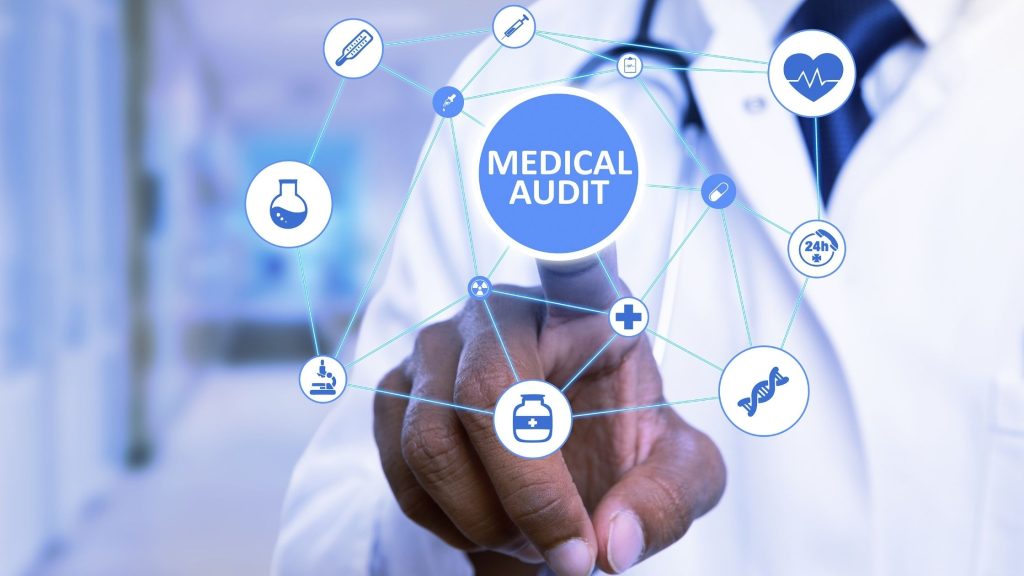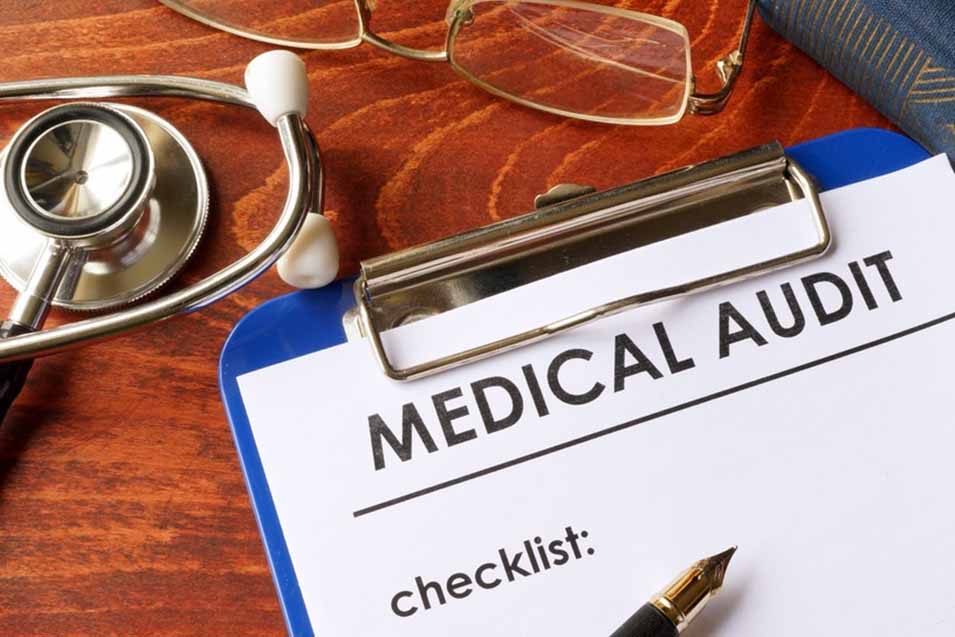Medical Auditing Services: A Method for Finding Healthcare Inconsistencies

Medical auditing services are crucial for the healthcare sector because they help to spot inconsistencies in medical billing, enhance patient care, guarantee regulatory compliance, and cut costs. We will examine the various facets of medical auditing and how it benefits the healthcare system in this blog post.
What is Medical Auditing?
It is the process of reviewing medical records, bills, and healthcare policies to ensure compliance with regulations, industry standards, and quality care. It involves analyzing medical data, identifying discrepancies, and recommending corrective actions. Medical auditing is done by internal or external auditors, depending on the healthcare organization’s needs.
One unique aspect of medical auditing is its versatility in various healthcare settings. Medical auditing can be done in hospitals, clinics, long-term care facilities, and other healthcare settings to evaluate the quality of care provided to patients. Additionally, medical auditing can be customized to address specific concerns and needs in different healthcare settings, which makes it a versatile tool for quality improvement across various specialties and disciplines. Furthermore, medical auditing can be conducted by internal or external auditors, and it can be a proactive or reactive approach to quality improvement.
Identifying Discrepancies:
Medical auditing services is a crucial process in the healthcare industry. It helps to identify discrepancies in healthcare, such as incorrect billing, coding errors, and compliance issues. Auditors analyze medical data, review medical records, and compare them to billing and coding practices to identify potential discrepancies. They also assess the quality of care provided to patients, identifying areas for improvement and recommending corrective actions.
Resolving Discrepancies:
Once discrepancies are identified, medical auditing recommends corrective actions to resolve them. Auditors work with healthcare organizations to develop and implement action plans to address discrepancies, improve healthcare operations, and ensure compliance with regulations and industry standards. These action plans may involve updating policies and procedures, training staff on proper billing and coding practices, and implementing new technology to streamline operations and improve patient outcomes
Types of Medical Audits:
There are several types of medical audits, including compliance audits, coding audits, financial audits, and quality audits. Compliance audits focus on ensuring regulatory compliance with state and federal laws, such as HIPAA, OSHA, and CMS. Coding audits review the accuracy of medical coding and billing practices. Financial audits focus on financial statements, accounts, and transactions, ensuring financial accuracy and compliance. Quality audits assess the quality of care provided to patients, identifying areas for improvement.
Benefits of Medical Auditing:

It offers numerous benefits to healthcare organizations, including improved patient care, increased efficiency, and reduced healthcare costs. By identifying and addressing discrepancies, medical auditing helps to improve the quality of care, reduce medical errors, and enhance patient safety. It also helps to streamline healthcare operations, reduce administrative burdens, and optimize revenue cycle management.
The Role of Technology in Medical Audit: Technology plays a crucial role in medical auditing, enabling auditors to automate the audit process, reduce errors, and increase efficiency. Medical auditing software and tools are designed to identify discrepancies in billing and coding practices, flagging potential areas for improvement. Technology also enables healthcare organizations to track and analyze patient data, ensuring compliance with regulations and industry standards.
Medical Audit Strategies

Medical auditing services are crucial in the healthcare industry that helps to ensure regulatory compliance, improve patient outcomes, and reduce healthcare costs. Effective medical auditing strategies are essential for identifying discrepancies in healthcare, recommending corrective actions, and optimizing revenue cycle management. In this blog post, we will explore some medical auditing strategies that healthcare organizations can adopt to improve the quality of care and enhance patient safety.
Develop a Comprehensive Audit Plan:
The first step to effective medical auditing services is to develop a comprehensive audit plan. The audit plan should include a clear scope of the audit, the audit objectives, the audit methodology, and the audit timeline. This plan should be in review and should be under check regularly to ensure that it aligns with the healthcare organization’s goals and objectives.
1.Conduct Regular Audits:
Regular audits are essential for identifying discrepancies in healthcare and ensuring regulatory compliance. Healthcare organizations should conduct audits on a regular basis, such as annually or bi-annually. Audits can be lead internally or externally, depending on the healthcare organization’s needs. Patients who receive high-quality care are more likely to satisfy themselves with their healthcare experience and more likely to return for future care.
2.Use Technology:
Technology plays a crucial role in medical auditing, enabling auditors to automate the audit process, reduce errors, and increase efficiency. Medical auditing software and tools are there to identify discrepancies in billing and coding practices, flagging potential areas for improvement.
Technology also enables healthcare organizations to track and analyze patient data, ensuring compliance with regulations and industry standards. With the help of medical auditing, healthcare providers can continuously improve and adapt their practices to ensure that they are providing the best possible care to their patients.
3.Train Staff on Best Practices:
Effective medical auditing services requires a team effort, and healthcare staff must be trained on best practices for billing and coding, compliance, and patient care. Staff training should be a continuous process, with regular updates and refreshers on new policies and procedures.
4.Collaborate with Stakeholders:
It should be a collaborative process, with stakeholders such as medical professionals, administrators, and regulatory agencies working together to improve patient outcomes and ensure regulatory compliance. Collaboration helps to identify areas for improvement and develop effective action plans to address discrepancies. Once these areas are known, healthcare providers can make necessary changes to reduce the likelihood of adverse events and improve patient safety.
Popular Companies Providing Medical Audit:
With help of some Medical Billing Companies we can identify discrepancies in healthcare, ensure regulatory compliance, and optimize revenue cycle management. Many companies provide medical audit services, offering comprehensive solutions for healthcare organizations. In this blog post, we will explore some of the top companies that provide medical audit services and their offerings.
- Ace Med Assist
- Avia code:
- AAPC:
- Healthcare Compliance Pros:
- PwC
Identifying and Preventing Fraudulent Activities in Healthcare
Fraudulent activities in healthcare not only lead to financial losses for healthcare organizations, but they also negatively impact patient care, damage the reputation of the providers, and can result in significant compliance penalties. Therefore, it is essential for healthcare organizations to take proactive measures in identifying and preventing fraudulent activities.
Types of Healthcare Fraud:

- Some common types of healthcare fraud include: a. Upcoding: Billing for a more expensive service than the one provided. b. Unbundling: Separating services that should be billed together to charge for each separately. c. Phantom billing: Billing for services that were never provided. d. Kickbacks: Receiving financial benefits for referrals or prescribing specific medications. e. Identity theft: Using another person’s information to obtain medical services or prescriptions.
- Strategies for Identifying Fraudulent Activities: Organizations should think about implementing the following tactics to spot healthcare fraud: Regular internal and external audits: Regular audits can be used to spot patterns that may be signs of fraud as well as weak points. b. Data analysis: Analyzing data from patient records, billing, and coding can help find anomalies that could be signs of fraud.
- Preventing Fraudulent Activities in Healthcare: Healthcare organizations can take several measures to prevent fraudulent activities from occurring. Implement robust compliance programs: Establishing and maintaining a comprehensive compliance program that includes regular training, monitoring, and enforcement can help reduce the risk of fraud. Strengthen internal controls: Ensuring that there are strong internal controls in place, such as separation of duties and access controls, can minimize the opportunities for fraud. Use technology solutions: Implementing technology solutions, such as data analytics tools, can help detect patterns indicative of fraud and alert organizations to potential issues.
Enhancing Patient Care Quality through Medical Auditing

Medical auditing services can play a crucial role in enhancing patient care quality by identifying areas for improvement. Prioritizing improving patient safety, reducing medical errors, and increasing patient satisfaction.
By actively conducting medical audits, healthcare providers can identify areas where the quality of care given to patients can upgrade. Through reviewing medical records, procedures, and protocols, auditors can pinpoint gaps in care delivery and recommend changes that can enhance patient outcomes. Moreover, medical auditing can enhance patient safety by identifying potential safety hazards and risks to patient safety.
Furthermore, medical auditing services can help reduce the incidence of medical errors by identifying errors in patient care delivery, such as medication errors, documentation errors, and diagnostic errors. By recognizing these errors and making recommendations for improvements, healthcare providers can enhance the quality of care delivered to patients. Lastly, by enhancing the quality of care provided to patients, medical auditing can improve patient satisfaction.
Conclusion:
In conclusion, medical auditing services are essential in the healthcare industry, and many companies provide comprehensive solutions to help healthcare organizations improve their auditing practices. From training programs and certifications to technology solutions and comprehensive audit services. These companies offer a wide range of services to ensure regulatory compliance, optimize revenue cycle management, and enhance patient outcomes. By partnering with these companies, healthcare organizations can ensure the provision of high-quality care and compliance with regulatory requirements.
Medical auditing is a valuable tool for enhancing patient care quality through identifying areas for improvement. The top priority should be improving patient safety, reducing medical errors, and increasing patient satisfaction. By identifying areas for improvement, improving patient safety, reducing medical errors, and increasing patient satisfaction, medical auditing can ultimately lead to better patient outcomes.
For More Info Read: Medical Billing Services



